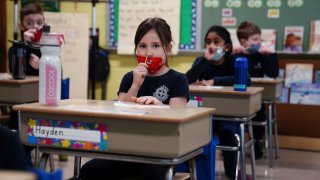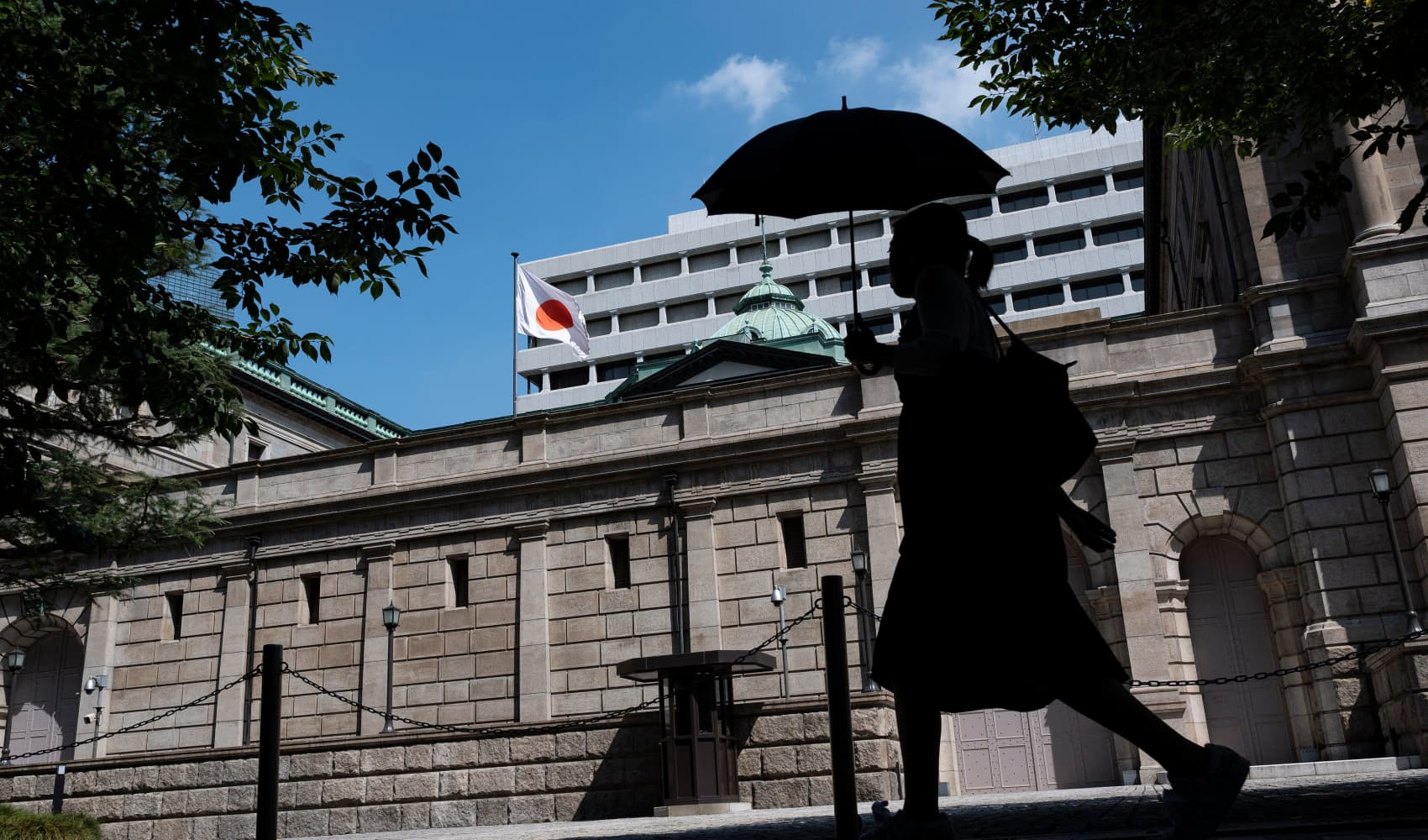
- The CDC on Friday unveiled sweeping new guidance on how schools can safely reopen for in-person learning despite the spread of the coronavirus and highly contagious new variants.
- President Joe Biden pledged in December to reopen the majority of the country's schools in his first 100 days after taking office.
- Data from Burbio, a service that tracks school opening plans, recently reported that almost 65% of K-12 students are already learning in person to some degree.
The Centers for Disease Control and Prevention on Friday unveiled sweeping new guidance on how schools can safely reopen for in-person learning despite the spread of the coronavirus and highly contagious new variants.
The guidance advises schools to phase in their reopening plans in accordance with the severity of the outbreak in their areas. It recommends schools adopt "essential elements" in resuming in-person learning, including wearing masks, physical distancing and monitoring the level of spread in the surrounding community.
The Department of Education simultaneously released volume 1 of its guidance for in-person learning to supplement the CDC's guidance.
"I want to be clear. With the release of this operational strategy, CDC is not mandating that schools reopen." CDC Director Dr. Rochelle Walensky said on a conference call with reporters. "These recommendations simply provide schools a long-needed road map for how to do so safely under different levels of disease in the community."
As "additional layers" of COVID-19 prevention, the CDC says schools should also implement a testing program to identify and isolate infectious people and vaccinate teachers and staff "as soon as supply allows." Walensky urged states to give teachers and educational staff priority access to the vaccines.
"Data suggest that it is possible for communities to bring down cases of COVID-19 while keeping schools open to in-person instruction," the guidance says. "Furthermore, models of consistent implementation of mitigation measures in schools have shown success in limiting outbreaks and infections in schools."
Money Report
However, the agency noted that the guidance might need to be updated as new, more contagious variants of the coronavirus spread across the U.S.
"If we get to a point where we are beyond the red zone here, really high levels of community spread related to the variants or related to just more transmission, we may need to revisit this again," Walensky said.
The CDC said the first step in considering whether to reopen schools should be to assess the level of spread in the community. The agency recommended schools monitor the total number of new cases per 100,000 residents over the past seven days in the community as well as the percent of positive tests over the past seven days, also known as the positivity rate.
All schools, the CDC says, can safely reopen for full in-person learning if they follow appropriate protocols and are located in communities that report fewer than 50 new cases per 100,000 residents over the past seven days and have a positivity rate lower than 8%. It is possible for schools in communities with higher levels of spread to reopen for in-person learning on some days or with limited attendance and stricter infection prevention measures, the CDC said.
Walensky noted that more than 90% of the K-12 schools in the country are currently in areas of high transmission. In communities where there's very low levels of spread, schools can even relax infection-prevention protocol like physical distancing, she added.
"When communities implement and strictly adhere to mitigation strategies, the level of community transmission is slowed," the new guidance says. "This will in turn enable schools that are open for in-person learning to stay open and help schools that have not yet reopened to return to in-person instruction."
The CDC noted that younger children may be less susceptible to COVID-19 than older, middle and high school-aged children. It said that schools should prioritize bringing back elementary school students who are least likely to become severely sick from COVID-19 and who appear to spread the virus less than teens.
And the CDC urged school administrators and local officials "to promote fair access to healthy educational environments for students and staff" for all students. White House COVID-19 response officials have said equity will be the "North Star" to the federal response to the pandemic.
"The absence of in-person educational options may disadvantage children from all backgrounds, particularly children in low-resourced communities who may be at an educational disadvantage," the new guidance says. "On the other hand, certain racial and ethnic groups have borne a disproportionate burden of illness and serious outcomes from COVID-19."
The agency said school districts should conduct active outreach to underserved families, "including parents/guardians of students of color, students from low-income backgrounds, students with disabilities, English learners, students experiencing homelessness, and students in foster care."
Walensky and Donna Harris-Aikens, senior advisor for policy and planning at the Department of Education, announced the new guidance on a conference call with reporters.
American Federation of Teachers President Randi Weingarten hailed the new guidance, saying that it should have been released 10 months ago. She also urged Congress to pass funding for school districts to help alleviate the costs of complying with the new guidance.
"Today, the CDC met fear of the pandemic with facts and evidence," she said. "For the first time since the start of this pandemic, we have a rigorous road map, based on science, that our members can use to fight for a safe reopening."
The new guidance comes after Walensky said last week that schools can safely reopen even if teachers aren't yet vaccinated. The White House quickly distanced itself from the comment. Press secretary Jen Psaki said it was not "official guidance" from the CDC.
President Joe Biden has made reopening the nation's schools for in-person instruction one of his top priorities. He pledged in December to resume in-person instruction at a majority of the nation's schools in his first 100 days after taking office, but Biden did not define what it meant for a school to "reopen."
In January, he specified that the goal applied only to schools that teach students up to eighth grade. And earlier this week, the White House further clarified that schools will be considered open so long as they teach in person at least one day a week. Psaki said Wednesday the goal is part of the White House's "bold ambitious agenda," adding that it's a floor the administration hopes to exceed.
"His goal that he set is to have the majority of schools, so more than 50%, open by day 100 of his presidency," she said. "And that means some teaching in classrooms. So, at least one day a week. Hopefully, it's more."
In-person schooling came to an abrupt halt across the country in March as schools shifted to remote learning to protect students, teachers and parents from the coronavirus. But education experts and public health groups, including the World Health Organization, have warned of the lasting consequences of keeping students out of the classroom. Economists, too, have cautioned of the impact on working parents, especially mothers, who have become unemployed in record numbers during the pandemic.
Former President Donald Trump urged governors and local officials to reopen schools for in-person learning, saying in July that keeping schools closed will probably cause "more death." But under his administration, the CDC offered little guidance on how and when to reopen safely, saying instead that the decision should be made by local and state officials.
The issue has become contentious in the U.S., with some saying the risk of the coronavirus to children is smaller than the consequences of missing school. While children and young adults are generally less likely to become severely sick and die from COVID-19, risk is heightened if the person has an underlying condition that compromises their immune system. More than 120 people younger than 20 have died of COVID-19 in the U.S. as of September, according to the CDC.
In lieu of clear federal direction thus far, state, local and school officials have all charted their own course on how and when to reopen schools. Data from Burbio, a service that tracks school opening plans, recently reported that almost 65% of K-12 students are already learning in person to some degree.
— CNBC's Hannah Miao contributed to this report.






